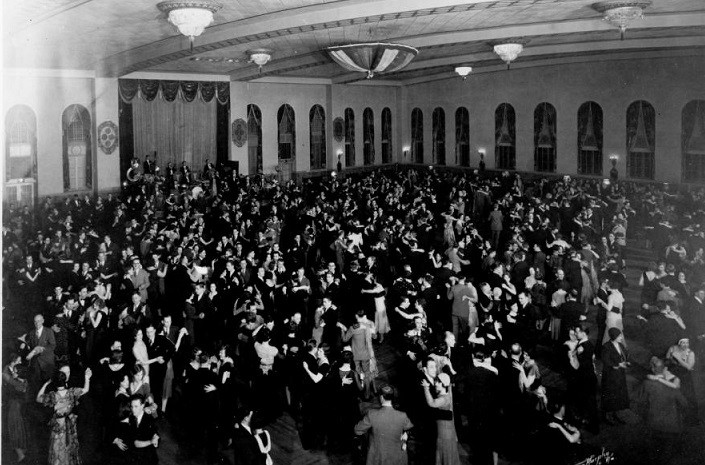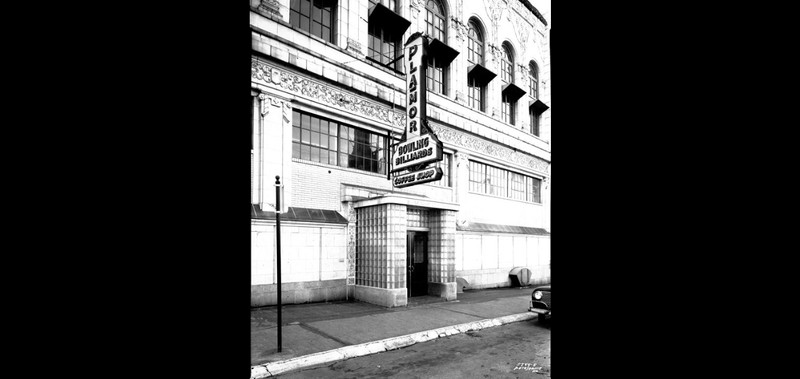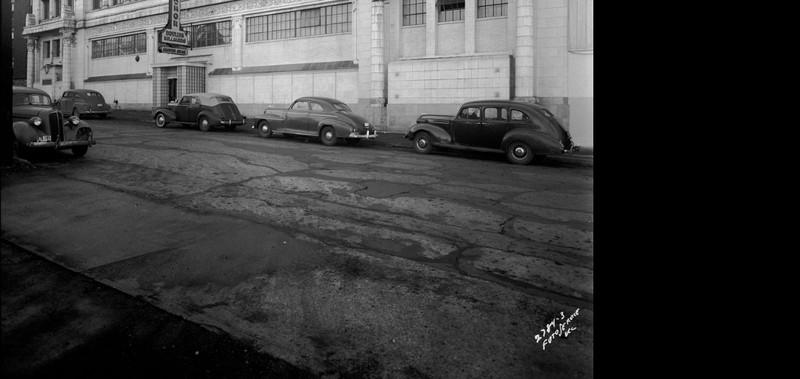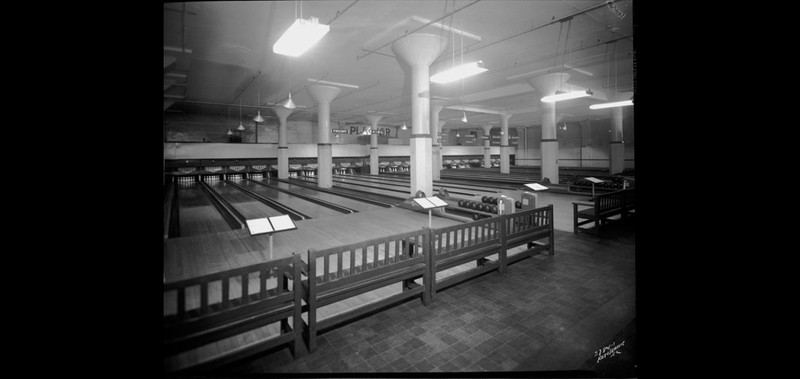Site of the original Pla-Mor Ballroom
Introduction
Text-to-speech Audio
The Pla-Mor Ballroom was a popular Jazz venue and entertainment complex operated from 1927 to 1951. The site first opened on Thanksgiving 1927 to a crowd of 4,000 patrons who came out to dance to the sounds of the Jean Goldkette Orchestra. But the Pla-Mor was home to more than music. The Pla-Mor complex claimed to be the largest indoor amusement center in the country, with a bowling alley and billiards room underneath the ballroom and an ice hockey rink next door. In 1931 the Pla-Mor complex added the largest swimming pool west of the Mississippi. During its heyday the Ballroom welcomed jazz greats such as Ella Fitzgerald, Claude "Fiddler" Williams, Louis Armstrong, and Frank Sinatra. But this heyday was short lived. The popularity of the Pla-Mor ballroom declined in the 1940’s as suburbanization drew populations out of the city and ballroom entertainment became less attractive. The ballroom permanently closed in 1951 with other attractions at the Pla-Mor complex following soon after. in 1971 the site was demolished to create space for a car dealership.
Images
Pla-Mor Ballroom

Southeast Side Entrance of Pla-Mor Entertainment Complex

Pla-Mor Exterior

Pla-Mor Bowling Alley

Backstory and Context
Text-to-speech Audio
The Pla-Mor was built by Charles A. Smith an architect known for his work on Kansas City Public Schools. The facility cost over $500,000 and became the country’s largest indoor entertainment complex upon its completion. On November 24th, 1927 the Ballroom made its debut welcoming 4,000 patrons into its 14,000 square foot dance floor to dance to the Jean Goldkette Orchestra. Dancers may have been surprised to find some extra spring in their step as 7,000 springs sat below the dancefloor flexing up to a quarter inch as they danced. (Jason Roe) Just one day after its opening the Kansas City Times wrote to rave on the magnificence of the ballroom. "For those who went merely to see, there was magnificence for the eye. Entrance was under a brilliant electric sign. Once past the door, wall decorations of freehand painting attracted attention. Rich carpet gave an impression of luxuriousness. Up a flight of steps and down a hall past the women’s cloak room the eye followed vivid hunting and jungle scenes of the modern motif...
The ball room and mezzanine were decorated in a more strictly patterned manner. Here the lighting brilliance demanded the first and lasting attention. Ceiling fixtures of beaded glass chains suspended bowl-shaped, with variable colors glowing through them, vied with tinted lamps casting full and toned colors across the floor from the walls." (KCTimes November 25th, 1927)
The Pla-Mor Ballroom was also the site of an ugly event in Kansas City jazz history. Though the ballroom relied on the entertainment of African American Jazz legends, this club was open to whites only. Jazz legend Cab Calloway found that he was no exception to this rule. On December 23rd, 1945 Calloway was invited by his friend bandleader Lionel Hampton to come watch his set at the Pla-Mor. When Calloway attempted to enter the all-whites club he was stopped at the door. The situation escalated until a nearby off duty policeman William Todd assaulted Calloway by hitting him in the skull with his pistol. Calloway had to be taken to the hospital and received 8 stitches. At the end of the night, he faced three misdemeanor charges while Todd went uncharged. Calloway went on to sue the Pla-Mor ballroom for $200,000 but this attempt was unsuccessful. When Lionel Hampton learned of the incident he stopped playing and refused to play at the Pla-Mor Ballroom ever again.
Sources
Spivak, Jeffrey and Lynn Horsley. "AT PLA-MOR OPENING, 4,100.” Kansas City Times, 11/25/1927.
Kansas City Museum
Missouri Valley Special Collections
Missouri Valley Special Collections
Missouri Valley Special Collections
